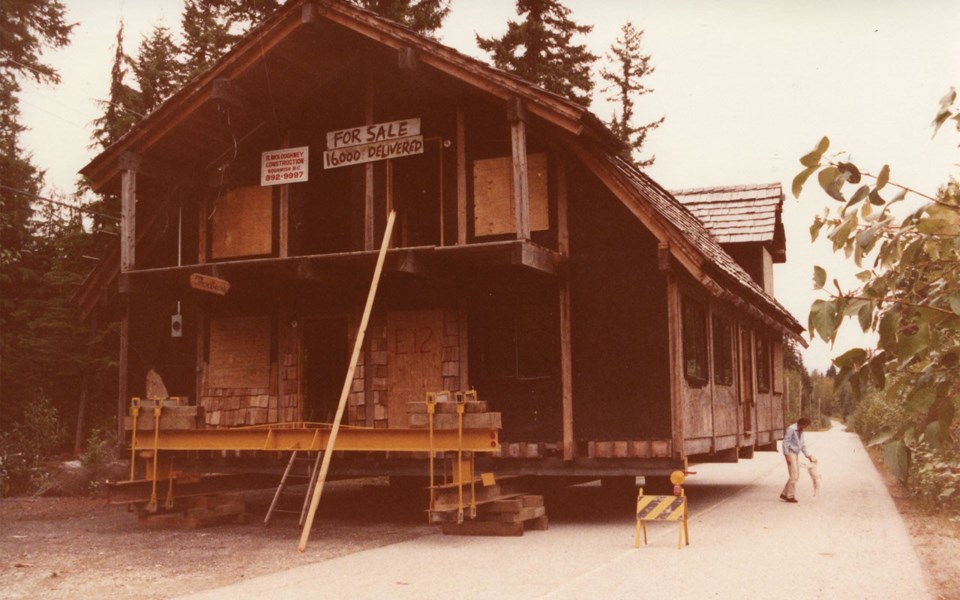Most people in Whistler are familiar with the process of moving house, including the packing, repacking, and unpacking. Just about every person you meet has a story to share about moving to or in Whistler, but not many are able to tell you about the time they moved a house to Whistler.
Last week, however, we had someone do just that: Len Ritchie visited us at the museum to share his story of moving a 278 square metre (3,000 sq/ft) house from Garibaldi to White Gold in 1983.
Ritchie and his (not-yet-at-the-time) wife Patty first came to Whistler in 1975 and later moved to Whistler full-time, buying an empty lot in White Gold. While driving Highway 99 in the fall of 1983, Len spotted a house on the side of the road with a sign proclaiming "For Sale $16,000 Delivered."
The unfinished house had originally been built at Garibaldi and the owner had decided to move the structure to a lot in Pinecrest. Bob Moloughney of Squamish had been hired to move the house, but when the owner's plans fell through Moloughney was left with the house. He decided to sell it, including the cost of delivery in the price.
Moving the house up the highway required some careful planning and could certainly disrupt traffic. When Ritchie approached BC Hydro and BC Tel about dropping the lines during the move, he was told it would cost $16,000. Instead, the decision was made to remove part of the roof from the house, bringing it down to a legal height to move under the lines, and moving that piece separately.
On the first day they got the house as far as Function Junction. Ritchie recalled, "It was dark, and it was a little rainy, and we're up on top with our poles to go under the lines. So the logging truck, Valleau trucking, they were the driver, we had walkie-talkies, so he'd get up on the road and we'd get under a line and we'd go, 'Hold it, hold it,' and we'd push the line up, 'OK, go ahead, go ahead,' and that's how we worked our way all of the way up the highway."
To get over the Fitzsimmons Creek Bridge, then the only access to White Gold, took more than four hours. Lindsay Wilson, fire chief, left a truck in White Gold just in case a fire should occur while the house was occupying the bridge. The house was jacked up using railway ties and the ends of the bridge railings were cut off, allowing the house to clear the bridge by mere centimetres. After a while, White Gold residents came out to go to work and about their days, only to find that they couldn't drive out. Instead, Ritchie remembers, "If anybody needed to leave, I'd take their hand and bend down and crawl or crouch all the way." When they reached the other side, he had taxis waiting for them.
The last stage of the move was up the hill to Ambassador Crescent. After one perilous attempt at winching the house up the hill, Art Den Duyf kindly sent over a D6 Cat and a 988 loader to push and pull the house into place. The top of the roof was then reattached and Ritchie, Patty and helpful friends took the next year and a half to fix the house up.
The house has since been sold a few times, but it is still standing. In Ritchie's opinion, the house that he first saw covered in tar paper, is now "a beautiful big house up there today," and it has quite the story behind it.




